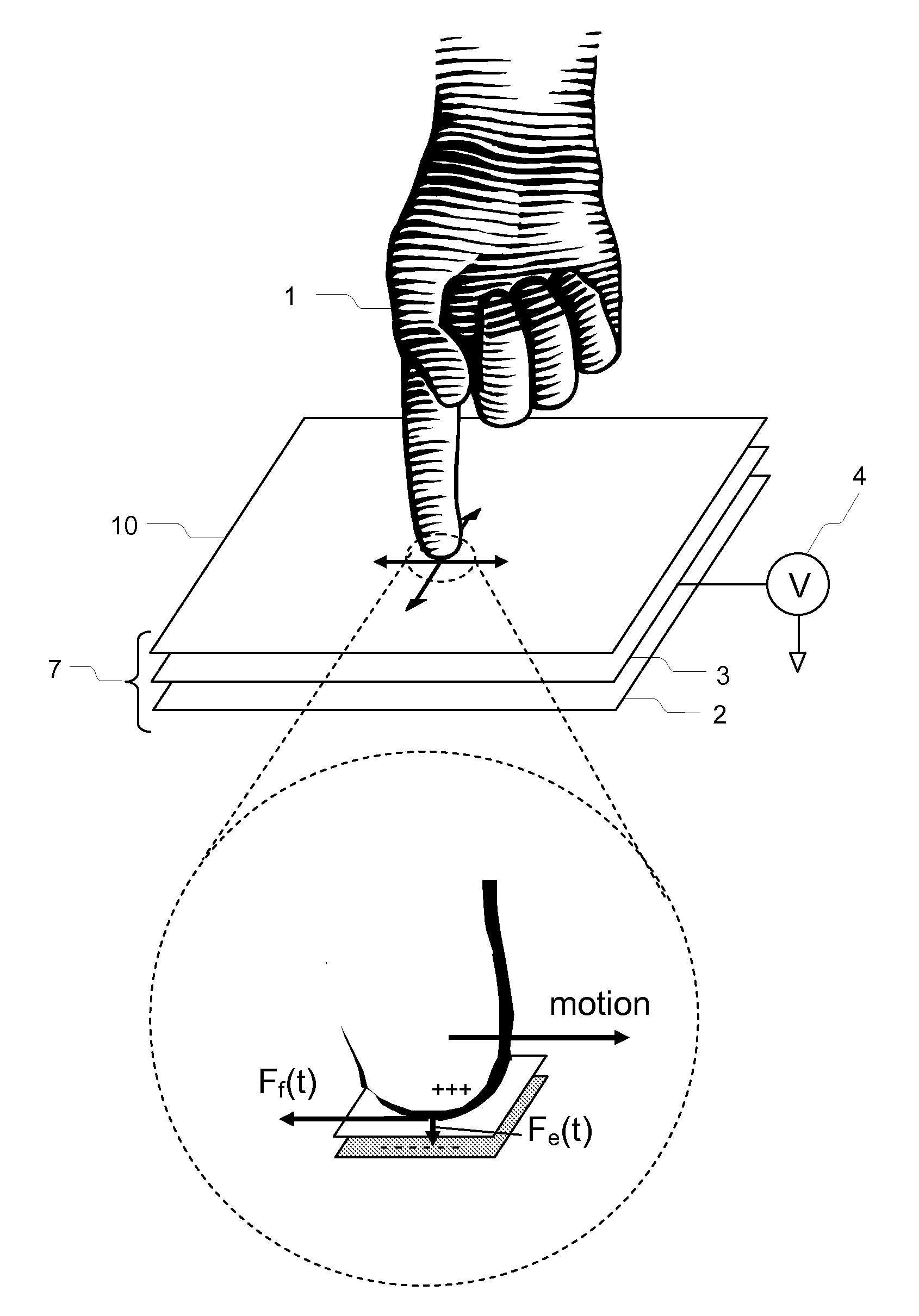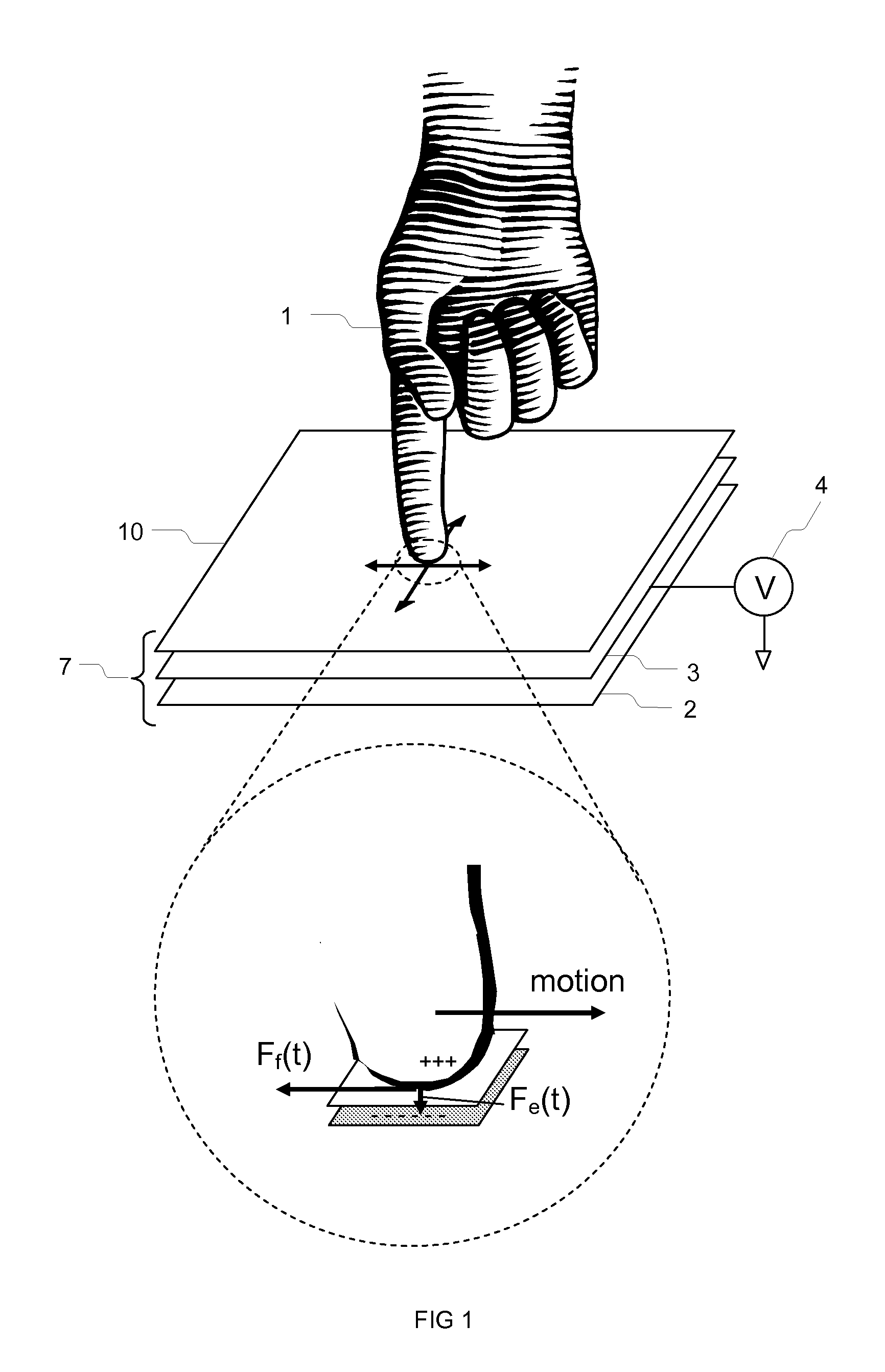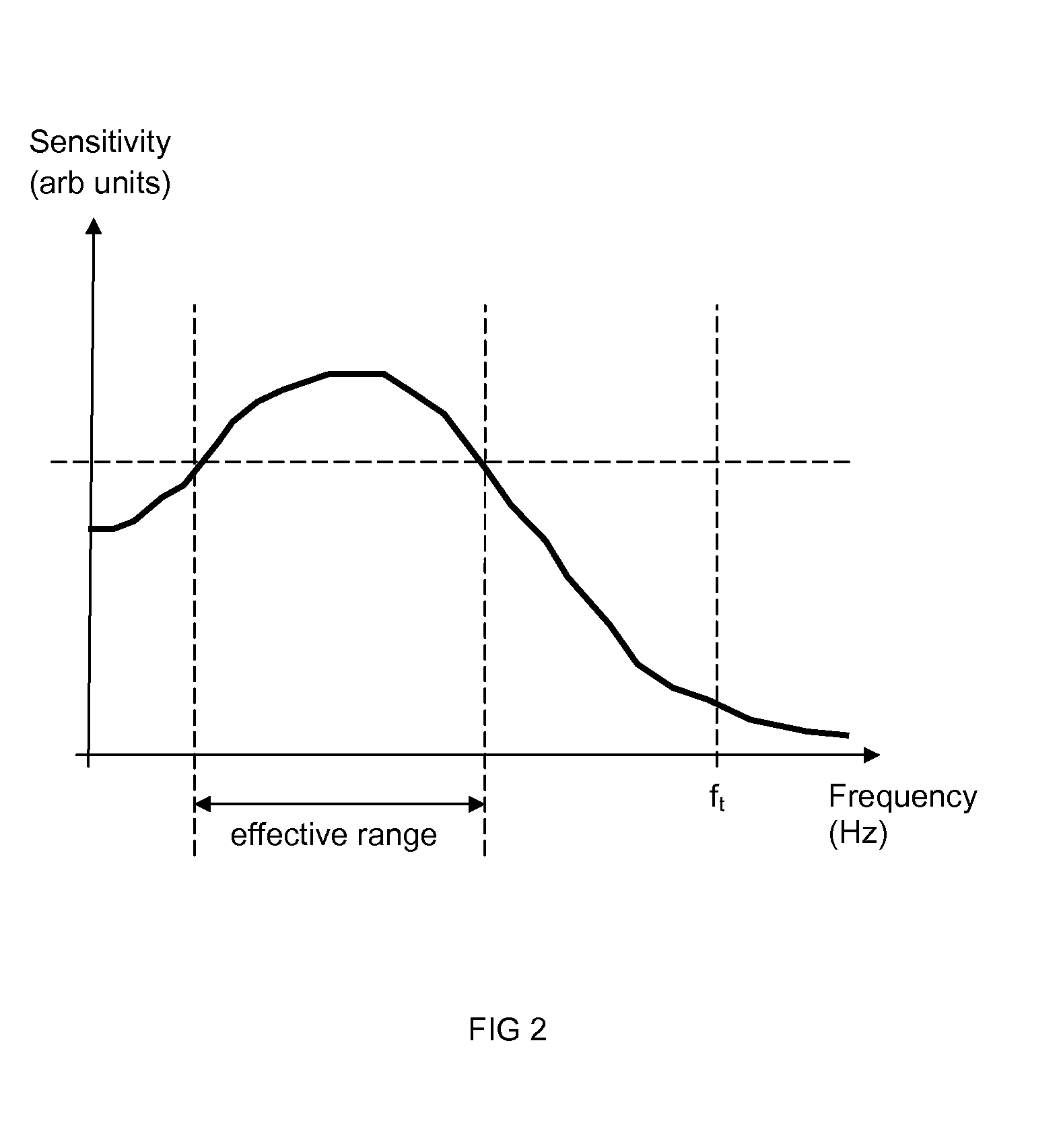Touch-screen device including tactile feedback actuator
a tactile feedback and actuator technology, applied in the field of tactile feedback actuators, can solve the problems of increased data entry error rate, limited sensation caused by mechanical vibration, and decreased user satisfaction, and achieve the effect of reliable device operation
- Summary
- Abstract
- Description
- Claims
- Application Information
AI Technical Summary
Benefits of technology
Problems solved by technology
Method used
Image
Examples
Embodiment Construction
[0121]Referring to FIG. 1, tactile feedback sensations may be created by generating vibrations in the skin of a user's finger. These vibrations may be created by the electro-vibration method. A touch feedback device 7 capable of generating tactile feedback sensations by the electro-vibration method is shown in FIG. 1 and includes a conductive layer 2 and insulating layer 3 that are located beneath a surface layer 10. A voltage signal generator 4 may be attached to the conductive layer 2 and used to apply a time-varying high voltage signal. This time-varying high voltage signal may be periodic in nature, for example a sinusoid, square wave, or triangular wave. When a user 1 touches the surface layer 10 of the tactile feedback device, the skin of the finger touching the surface 10 will experience a periodically varying attractive electrostatic force Fe(t) towards the surface. This varying attractive force may cause vibrations in the users skin that are directly perceived by the user a...
PUM
 Login to View More
Login to View More Abstract
Description
Claims
Application Information
 Login to View More
Login to View More - R&D
- Intellectual Property
- Life Sciences
- Materials
- Tech Scout
- Unparalleled Data Quality
- Higher Quality Content
- 60% Fewer Hallucinations
Browse by: Latest US Patents, China's latest patents, Technical Efficacy Thesaurus, Application Domain, Technology Topic, Popular Technical Reports.
© 2025 PatSnap. All rights reserved.Legal|Privacy policy|Modern Slavery Act Transparency Statement|Sitemap|About US| Contact US: help@patsnap.com



